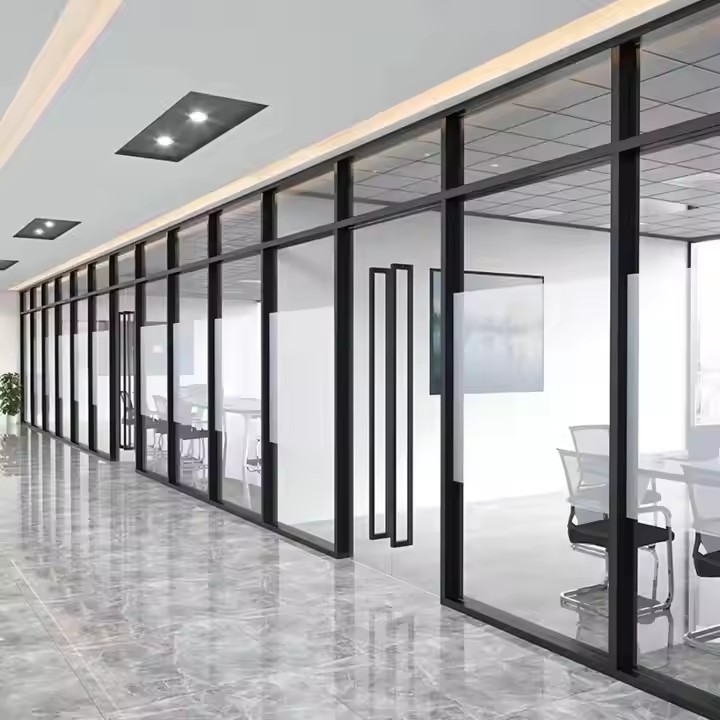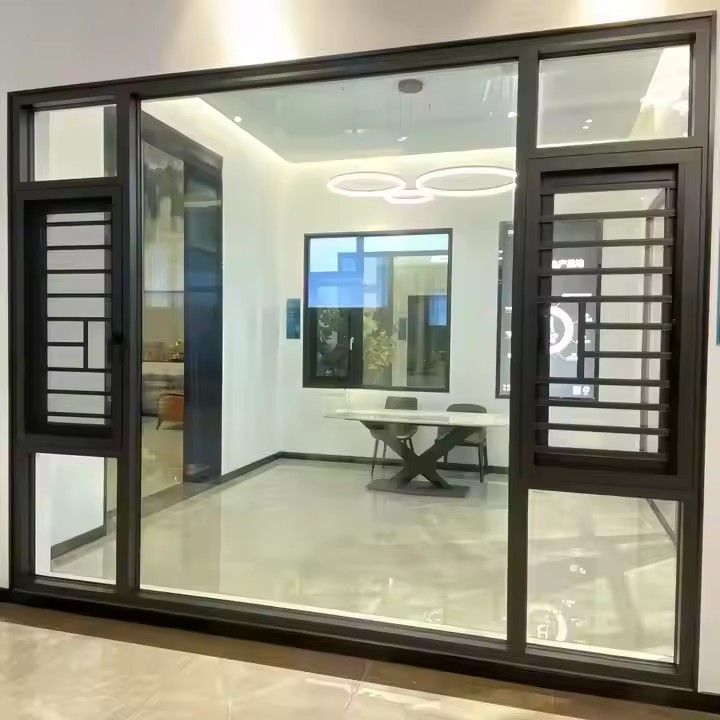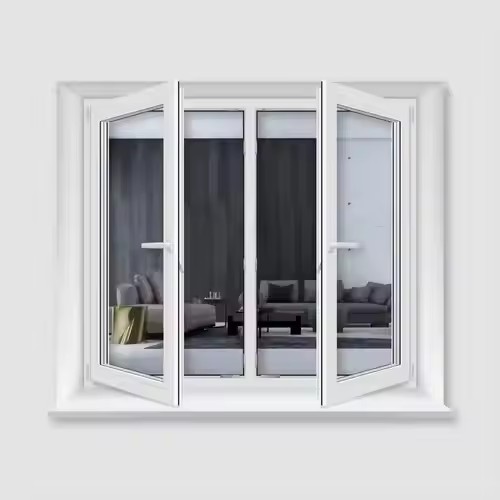- Material Selection: Texture is the Foundation of Style
The material of folding doors directly determines the visual tone and tactile experience of a space. It must be carefully matched with the interior design style and functional needs.
Metal Materials: Crisp Expression of Modern Minimalism
Stainless Steel and Aluminum Alloy: Matte brushed stainless steel frames with ultra-slim profiles are ideal for industrial or minimalist interiors, such as partitions between the living room and balcony. These convey a high-end aesthetic through “less is more” line design. Champagne gold or matte black are recommended to avoid the cheap look of glossy finishes.
Brass Accents: In light luxury or vintage styles, brass inlays or decorative hardware act as eye-catching elements. For example, kitchen folding door frames can incorporate brass lines, contrasting with marble countertops to create a refined vintage vibe.
Wood Textures: Fusion of Nature and Warmth
Solid Wood: Dark woods like walnut and oak are ideal for neo-Chinese or Nordic styles. The natural grain of the wood is preserved and paired with hand-rubbed finishes. Folding doors between the living room and study, for instance, can convey a natural ambiance through the flowing wood texture.

Wood Veneers: For cost-efficiency, wood grain veneer panels paired with aluminum frames can be finished with matte paint, mimicking solid wood while enhancing moisture resistance — suitable for kitchens or bathrooms.
Glass and Specialty Materials: The Interplay of Light and Art
Ultra-clear Glass + Patterned/Fluted Glass: High-transparency ultra-clear glass combined with patterned or fluted textures balances light transmission with privacy. For instance, fluted glass folding doors in walk-in closets softly diffuse light while blurring interior visibility.
Art Glass Insets: In European or French styles, folding doors can feature painted or etched glass inlays. For example, foyer doors with vine-patterned glass paired with crystal chandeliers enhance artistic flair.
- Structural Design: Balancing Minimalism and Functionality
Folding door structures must integrate seamlessly into the space, achieving both support and invisibility.
Minimal Framing and Concealed Tracks
Ultra-slim Frames: In modern designs, frame widths can be reduced to under 1.5 cm, with embedded upper tracks creating a “floating” visual effect. For example, panoramic folding doors between the living room and balcony align visually with floor-to-ceiling windows, enhancing depth.
Hidden Floor Tracks: For kitchens or bathrooms, suspended rail designs hide floor tracks beneath the door frame, preventing dust buildup and ensuring walking safety, while maintaining clean floor lines.
Rhythmic Folding Patterns
Symmetrical Folding: Even-numbered panels folding to both sides create a sense of geometric rhythm—ideal for rectangular spaces like dining room-kitchen partitions. Uniform tones enhance a sense of order.
Single-side Stacking: Odd-numbered panels fold to one side, creating an asymmetrical “screen-like” effect. For example, study doors folded to one side reveal bookshelves behind, making the door part of the décor.

- Color Strategy: From Spatial Harmony to Individual Expression
Colors should layer naturally with the overall design to avoid abrupt contrasts.
Monochromatic Harmony
In beige-toned spaces, folding doors in light gray or warm white matte finishes can provide gentle contrast. For instance, Nordic-style bedroom-balcony doors in light gray wood grain match white walls and natural wood furniture, evoking a harmonious “Morandi palette.”
Accentuating with Contrasting Colors
In minimalist black-and-white interiors, bold tones like mustard yellow or forest green on parts of the folding door (e.g. frame) can serve as visual highlights. A forest green frame against black-and-white furniture adds a stylish focal point.
In neo-Chinese styles, red and black combinations work well—e.g., matte black metal panels with vermilion wood edging echo traditional furniture colors while avoiding the oppressiveness of large red surfaces.
- Glass Art: A Dual Breakthrough in Light and Privacy
Glass choices directly influence the spatial atmosphere and lighting.
Functional Aesthetics of Glass
Double-glazed Glass: For balcony doors, Low-E insulated glass offers sound and thermal insulation. The metal coating between layers reflects light, producing a subtle blue or silver sheen that enhances the modern look.

Smart Glass: For bathrooms, electrochromic glass offers transparency when powered and frosts when off—balancing privacy and daylight. Combined with minimalist frames, it offers both technology and style.
Glass + Metal Fusion Designs
In industrial lofts, folding doors with “wrought iron frames + raw glass” work well. Frames can be treated with a distressed finish, and glass edges left raw to preserve cut texture—complementing exposed pipes and concrete walls for a bold, rugged style.
- Hardware and Details: The Underrated Code of Sophistication
Attention to detail is where true design refinement shows.
Decorative Hardware
Handles: For modern styles, choose recessed or embedded handles (e.g., finger grooves) to maintain clean lines. For vintage styles, opt for brass spiral handles or leather pull cords, as seen in study doors where leather ties match leather chairs.
Hinges and Rollers: Choose silent, damped rollers. Casings in the same finish as the frame (e.g., matte black rollers with black frames) unify the aesthetic and enhance quality.

